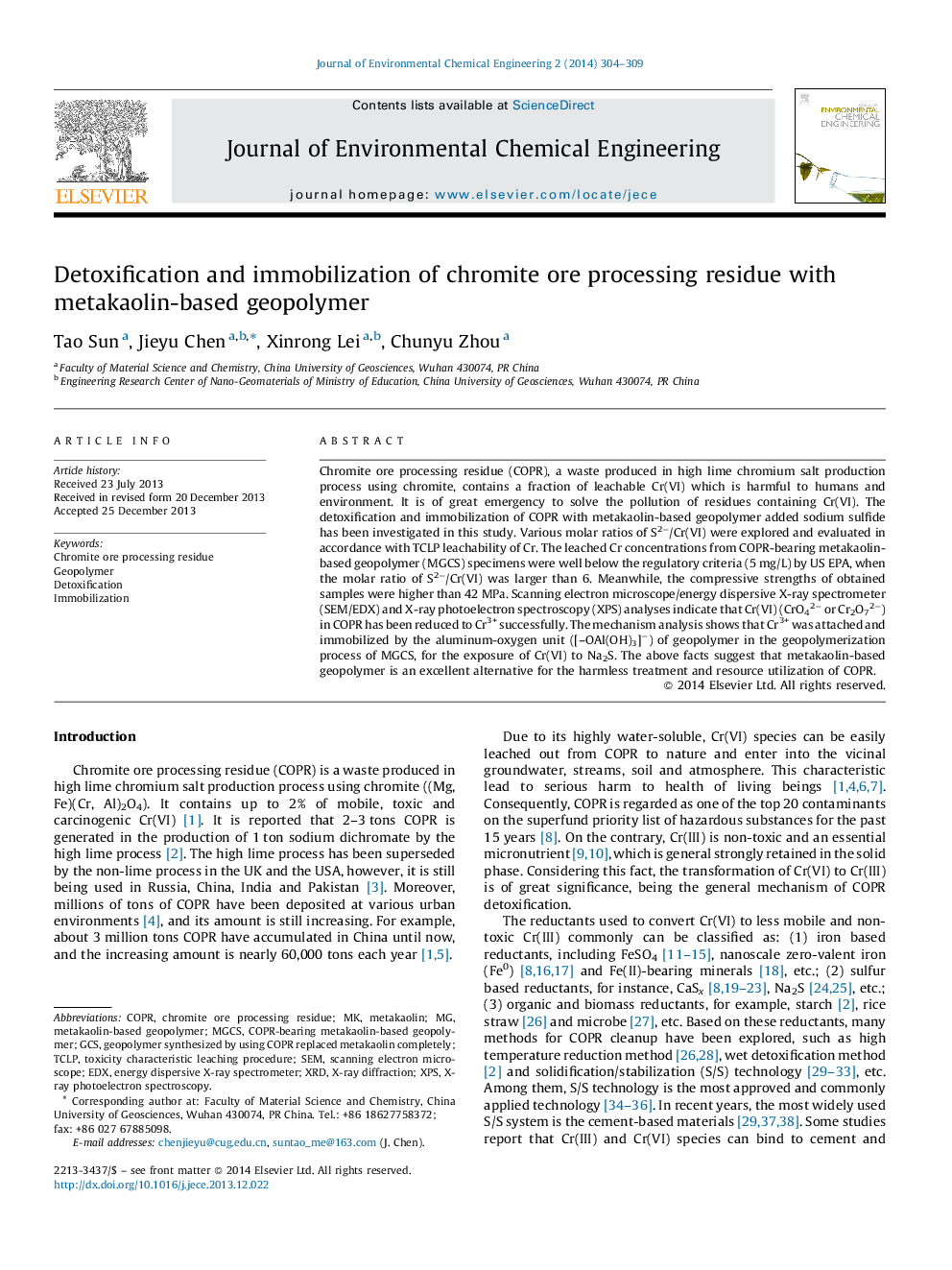| کد مقاله | کد نشریه | سال انتشار | مقاله انگلیسی | نسخه تمام متن |
|---|---|---|---|---|
| 222145 | 464270 | 2014 | 6 صفحه PDF | دانلود رایگان |

• Metakaolin-based geopolymer is applied to detoxify and immobilize COPR.
• Preferable sodium sulfide addition was determined according to Cr leachability.
• The product prepared has a relatively high compressive strength.
Chromite ore processing residue (COPR), a waste produced in high lime chromium salt production process using chromite, contains a fraction of leachable Cr(VI) which is harmful to humans and environment. It is of great emergency to solve the pollution of residues containing Cr(VI). The detoxification and immobilization of COPR with metakaolin-based geopolymer added sodium sulfide has been investigated in this study. Various molar ratios of S2−/Cr(VI) were explored and evaluated in accordance with TCLP leachability of Cr. The leached Cr concentrations from COPR-bearing metakaolin-based geopolymer (MGCS) specimens were well below the regulatory criteria (5 mg/L) by US EPA, when the molar ratio of S2−/Cr(VI) was larger than 6. Meanwhile, the compressive strengths of obtained samples were higher than 42 MPa. Scanning electron microscope/energy dispersive X-ray spectrometer (SEM/EDX) and X-ray photoelectron spectroscopy (XPS) analyses indicate that Cr(VI) (CrO42− or Cr2O72−) in COPR has been reduced to Cr3+ successfully. The mechanism analysis shows that Cr3+ was attached and immobilized by the aluminum-oxygen unit ([OAl(OH)3]−) of geopolymer in the geopolymerization process of MGCS, for the exposure of Cr(VI) to Na2S. The above facts suggest that metakaolin-based geopolymer is an excellent alternative for the harmless treatment and resource utilization of COPR.
Journal: Journal of Environmental Chemical Engineering - Volume 2, Issue 1, March 2014, Pages 304–309